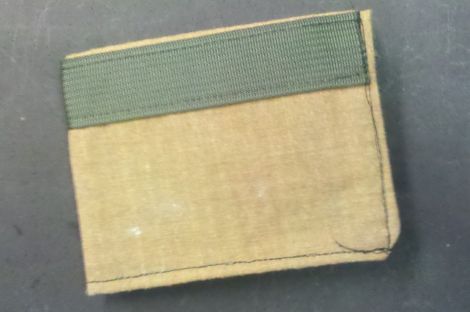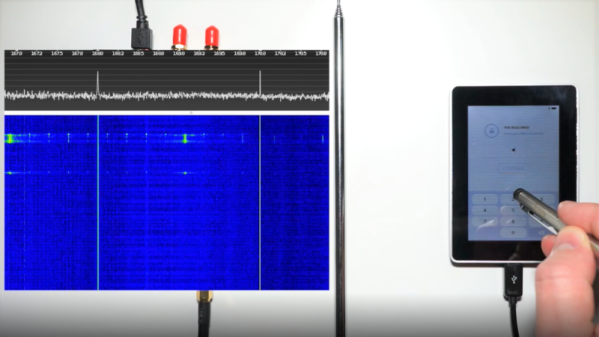When it comes to cryptocurrency security, what’s the best way to secure the private key? Obviously, the correct answer is to write it on a sticky note and put it on the bezel of your monitor; nobody’ll ever think of looking there. But, if you’re slightly more paranoid, and you have access to a Falcon 9, you might just choose to send it to the Moon. That’s what is supposed to happen in a few months’ time, as private firm Lunar Outpost’s MAPP, or Mobile Autonomous Prospecting Platform, heads to the Moon. The goal is to etch the private key of a wallet, cheekily named “Nakamoto_1,” on the rover and fund it with 62 Bitcoins, worth about $1.5 million now. The wallet will be funded by an NFT sale of space-themed electronic art, because apparently the project didn’t have enough Web3.0 buzzwords yet. So whoever visits the lunar rover first gets to claim the contents of the wallet, whatever they happen to be worth at the time. Of course, it doesn’t have to be a human who visits.
wallet9 Articles
Hackaday Links: January 30, 2022
After all the fuss and bother along the way, it seems a bit anticlimactic now that the James Webb Space Telescope has arrived at its forever home orbiting around L2. The observatory finished its trip on schedule, arriving on January 24 in its fully deployed state, after a one-month journey and a couple of hundred single-point failure deployments. The next phase of the mission is commissioning, and is a somewhat more sedate and far less perilous process of tweaking and trimming the optical systems, and getting the telescope and its sensors down to operating temperature. The commissioning phase will take five or six months, so don’t count on any new desktop photos until summer at the earliest. Until then, enjoy the video below which answers some of the questions we had about what Webb can actually see — here’s hoping there’s not much interesting to see approximately in the plane of the ecliptic.
Side-Channel Attack Shows Vulnerabilities Of Cryptocurrency Wallets
What’s in your crypto wallet? The simple answer should be fat stacks of Bitcoin or Ethereum and little more. But if you use a hardware cryptocurrency wallet, you may be carrying around a bit fat vulnerability, too.
At the 35C3 conference last year, [Thomas Roth], [Josh Datko], and [Dmitry Nedospasov] presented a side-channel attack on a hardware crypto wallet. The wallet in question is a Ledger Blue, a smartphone-sized device which seems to be discontinued by the manufacturer but is still available in the secondary market. The wallet sports a touch-screen interface for managing your crypto empire, and therein lies the weakness that these researchers exploited.
By using a HackRF SDR and a simple whip antenna, they found that the wallet radiated a distinctive and relatively strong signal at 169 MHz every time a virtual key was pressed to enter a PIN. Each burst started with a distinctive 11-bit data pattern; with the help of a logic analyzer, they determined that each packet contained the location of the key icon on the screen.
Next step: put together a training set. They rigged up a simple automatic button-masher using a servo and some 3D-printed parts, and captured signals from the SDR for 100 presses of each key. The raw data was massaged a bit to prepare it for TensorFlow, and the trained network proved accurate enough to give any hardware wallet user pause – especially since they captured the data from two meters away with relatively simple and concealable gear.
Every lock contains the information needed to defeat it, requiring only a motivated attacker with the right tools and knowledge. We’ve covered other side-channel attacks before; sadly, they’ll probably only get easier as technologies like SDR and machine learning rapidly advance.
[via RTL-SDR.com]
DIY Designer Wallet From Designer Bag
Why do people drop hundreds of dollars on designer goods? The easy answer is that, in theory, the goods are worth the expense. The materials, craftsmanship, and attention to detail are all top-notch and culminate in the finest finery money can buy.
So, would you spend hundreds of dollars on a designer wallet? If you have leather crafting skills and a thrift store nearby, you could just follow [Corter Leather]’s example and make your own. He found a diamond in the rough—a genuine, well-loved Louis Vuitton bag languishing in a secondhand shop. The leather bottom and handles were dry and worn, but the signature LV canvas was still in great shape. Never crafted leather? If you can’t get free scraps for practicing, then deconstructing cheap, used stuff is the next best thing.
To isolate the canvas, [Corter] carefully removed the bag’s handles, bottom, liner, and zipper and then popped the rivets and peeled the backing from the fabric. He drew up a pattern in Illustrator that pays homage to the illustrious designer’s wallets and cut the pieces out of 3oz vegetable tanned leather using card stock templates.
[Corter] brought his A-game to the details. Every visible edge is painted Italian red, which he applied with an awl for a crisp line. The larger pockets have hidden stitches that keep cards from drifting to the bottom and throwing off the shape. No need to open your wallet to see how he did it—just watch the video after the break.
Though it technically isn’t a real Louis Vuitton, a thief wouldn’t know it until later. Maybe [Corter] should add a pickpocket alarm.
Leather Wallet Making Involves More Than You Think
It’s not rocket science, but ending up with a beautifully crafted leather wallet like this one takes quite a bit more than you might think.
The project starts off with already tanned leather, so that definitely saves on time. The pieces are marked out on the stock before being cut with a hobby knife. There’s still a long way to go before you can start stitching though. The thickness of the edges is trimmed down and then burnished with a rotary tool. A channel is cut just inside the edges to receive the thickness of the thread. Holes are marked with a special tool, then bored using an awl. Once stitched together the edges are sanded perfectly flush before being burnished.
Just from the look of it we’d guess it’ll hold up years longer than anything you can buy at an ordinary big box retailer.
Continue reading “Leather Wallet Making Involves More Than You Think”
Quick Wallet Hack Adds Pickpocket Alarm
Recently there were a bunch of videos going around the net about some of the greatest pickpockets in the world. Simply put, if they wanted something you had, they were going to take it and you probably wouldn’t notice. I’ve always kept my wallet in my front pocket, and usually with my hand on it, but they even showed them getting around that in the video (you can’t always be vigilant).
I had the idea to make some kind of alarm that would go off if anyone but me removed the wallet from my pocket. A quick google search revealed tons of wallet alarms, but I noticed that they all had a credit card form factor(that’s good) and would make noise when exposed to light(that’s bad). This represents a problem since the pickpockets in the videos tended not to open the wallets till later at another location. I needed something that would make noise as it was removed from my pocket. Most importantly, I needed the alarm to be located inside the wallet. This immediately makes the wallet undesirable and will hopefully make someone drop it like hot coals.
DIY RFID Shielded Wallet Keeps Data Thieves At Bay

[Serge] was in search of a new wallet, but he was concerned about ne’er do wells with RFID readers stealing his data. He could have gone out to the store and plunked down $20-$30 for a shielded walled, but where’s the fun in that? Instead, he decided to make his own.
Using Kevlar-Nomex fabric, he laid out the general structure for his wallet. This ultra-strong fabric has a breaking strength of 500lbs, but blocking RF isn’t exactly its forte. To provide some electromagnetic shielding, [Serge] added a nice uniform layer of silver epoxy to the Kevlar, which carries an added bonus of strengthening the material. He fired up the sewing machine, adding a nylon strip to the exterior of the wallet for reinforcement, then he worked on forming the bill pouch and card holders.
The final result is a plain yet incredibly rugged wallet that’s sure to keep his various RFID-enabled cards safe. We really dig how unassuming the wallet is – no flash, all function. Nice job, we’ll take one!

















